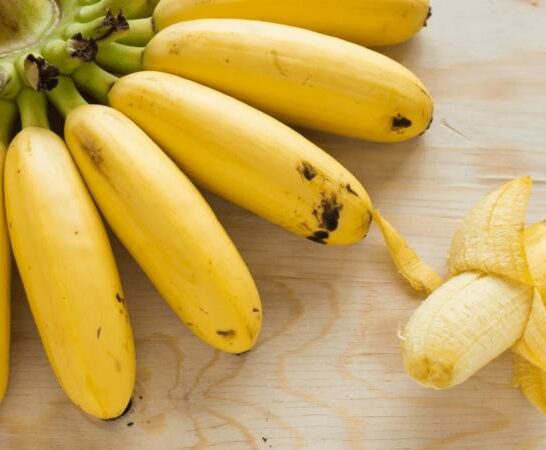My local farmers’ market has a wide variety of unusual banana varieties.
I was intrigued, and so I bought some.
When I got home, I wasn’t sure whether the bananas were ripe and ready to be enjoyed as a snack, added to my breakfast smoothie, or cut up for my daughter’s lunch flapjacks with honey.
While you can eat a banana at any stage of ripeness, a yellow banana doesn’t mean the banana is ripe (because other banana varieties could be red, purple, or green when ripe).
Just how could I tell whether these bananas were ripe?
How Can You Tell Your Banana Is Ripe?
To tell if a banana is ripe, look at it, feel it, and smell it. A ripe banana is soft and plump when you gently press against the peel, there are brown spots on the skin, and there’s no greenness on the stem. A ripe banana is easy to peel with no noise factor; it easily snaps off the stem, and when eating, your mouth will feel clean, and you’ll just taste the sweet banana flavor. If you smell a ripe banana, you’ll smell a distinctly sweet, banana-y smell.
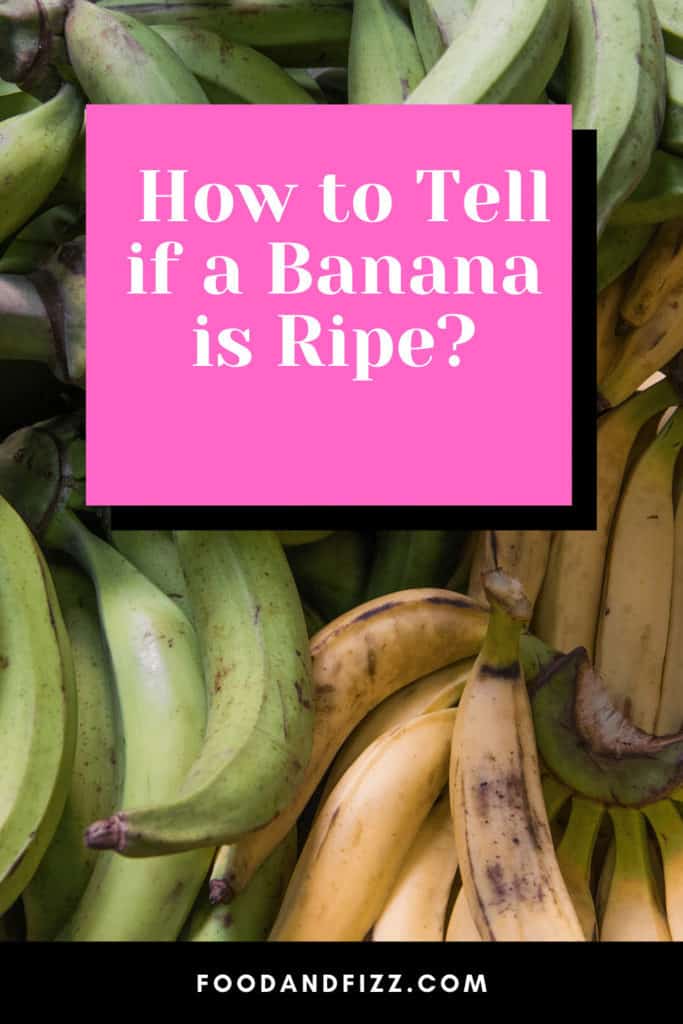
What Is a Ripe Banana?
Most people believe that a banana is ripe when it is yellow and that this is the best way to eat it.
In fact, you can eat a banana at any stage of ripeness, whether it is green, greenish-yellow, yellow, yellow with brown spots, or brown.
All of these have their own health benefits, and ultimately, how you eat your “ripe” banana depends on what you prefer.
Here’s some information about the taste and texture of the banana (for example, a Cavendish banana) in stages of ripeness:
- Traditionally, a green banana is under-ripe. But it helps your body absorb calcium easier, and it’s low in sugar. The higher starch content keeps you fuller for longer, and the probiotics are good for your colon. However, some people don’t like the taste and texture of a green banana.
- A greenish-yellow banana is almost ripe. There’s some sweetness to them.
- A yellow banana is traditionally seen as ripe. The fruit is soft and sweet.
- A yellow banana with brown spots is quite ripe. More yellow skin indicates a tender and sweet banana. This kind of banana fights against abnormal cells in your body because of the tumor necrosis factor and higher antioxidant levels. A quite ripe banana is easier to digest.
- Most people see a brown banana as an over-ripe banana, and will only use the fruit in dessert, shake, and smoothie-making.
Another factor that concerns ripeness is related to the color and the variety of the banana.
There are hundreds of different kinds of bananas, and not all of them are green when they are under-ripe and yellow when they are ripe and ready to be eaten.
For example, plantains, while not technically a banana but looking like bananas, are green when under-ripe.
But plantains are typically cooked when they are under-ripe, even though they eventually turn yellow.

Ebun Musak bananas are a green banana variety that’s light green when it is ripe, while red-purple bananas are red when they are under-ripe and have a greenish tint when ripe.
Even blue Java bananas or ice cream bananas are light blue when not yet ripe but turn light yellow when they are ripe.
How to Tell Your Banana Is Ripe: 9 Signs
Don’t want to eat a green banana or one that is definitely under-ripe? How can you tell your banana is ripe? Here are nine signs to look out for:
Sign 1: Softness
A ripe banana is soft when you gently squeeze the skin. So both the peel and banana inside will be softer than when the banana isn’t ripe yet.
An under-ripe banana will be very firm to your touch, so that’s how you can tell the difference between a ripe banana and an under-ripe one.
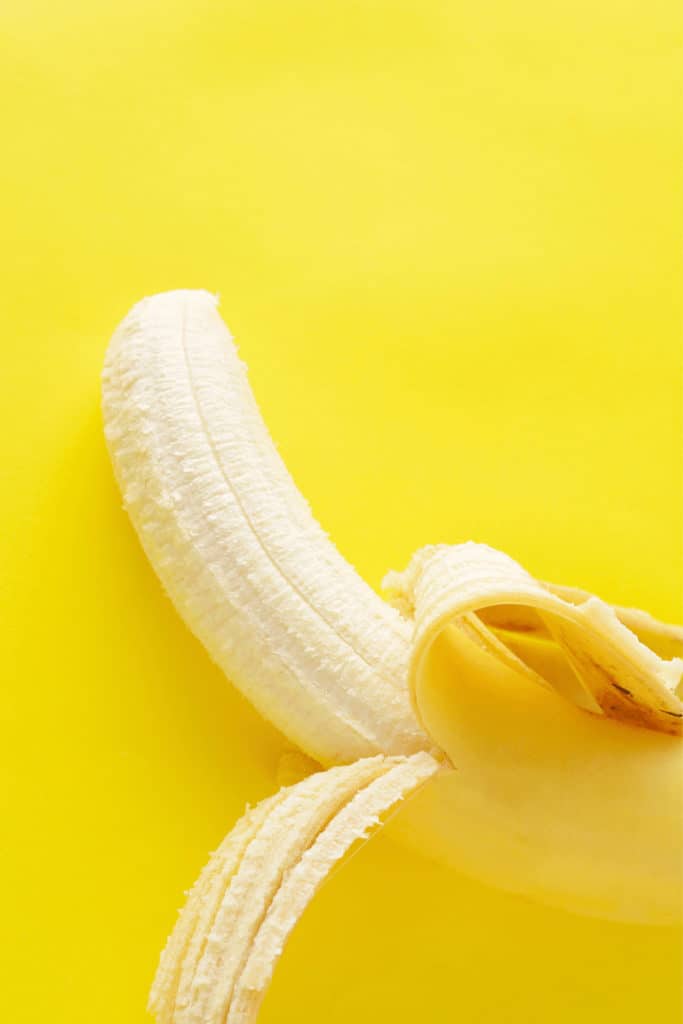
Sign 2: Brown Spots
A banana that has yellow skin or yellow skin with brown spots is ripe.
But if you see long black patches or the banana skin is brown from being bruised, then it isn’t necessarily ripe.
If you aren’t sure your banana is ripe, look for other signs of ripeness.
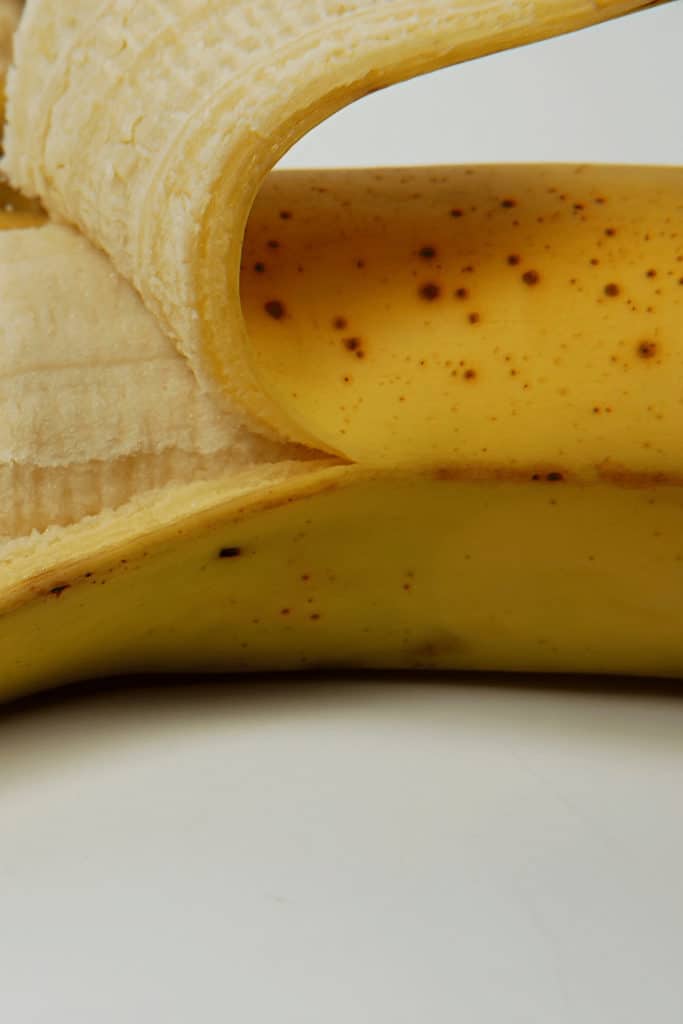
Sign 3: No Stem Greenness
If there is green coloring on the stem of your bananas, then they are still in the process of getting ripe.
No greenness on the stem means your bananas are ripe and ready to be enjoyed.
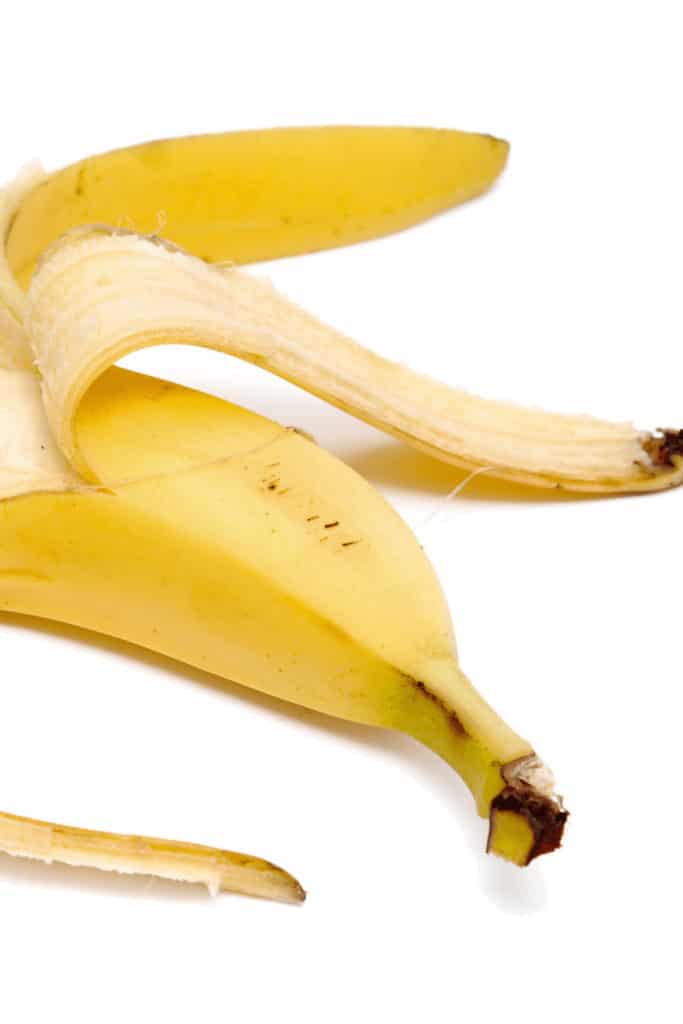
Sign 4: Easy to Peel
An under-ripe banana is quite challenging to peel, while a ripe banana just peels easily.
It almost feels like an easy-peeling banana is nature’s way of telling you, “It’s ready.”
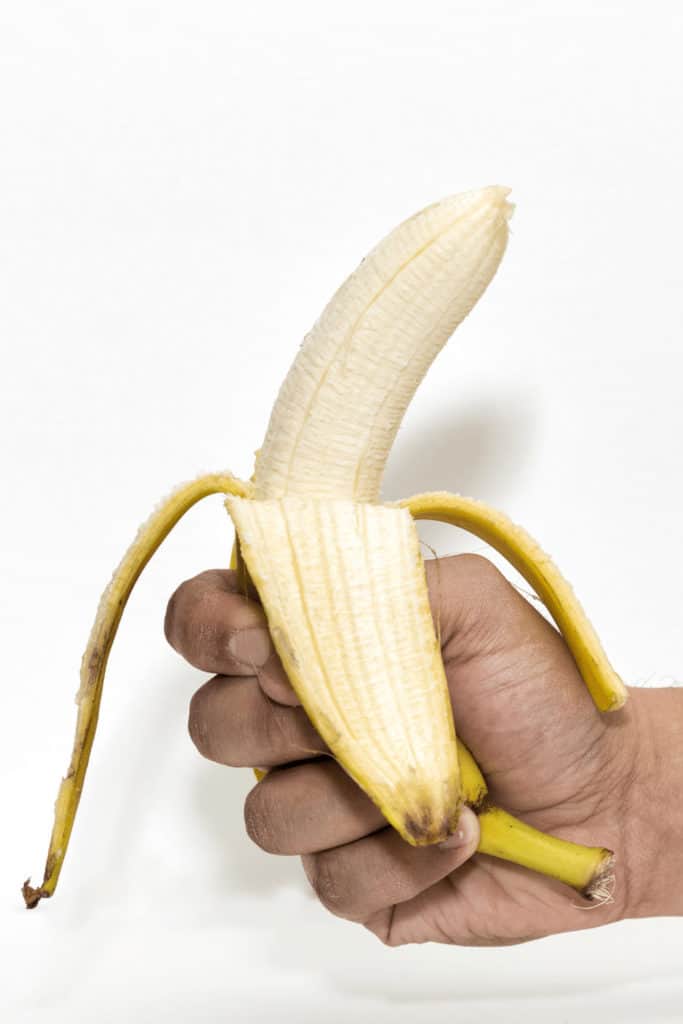
Sign 5: No Noise
There should be no noise when you peel a ripe banana.
However, there is a loud noise as you peel an under-ripe banana and draw one peel section away from the others.
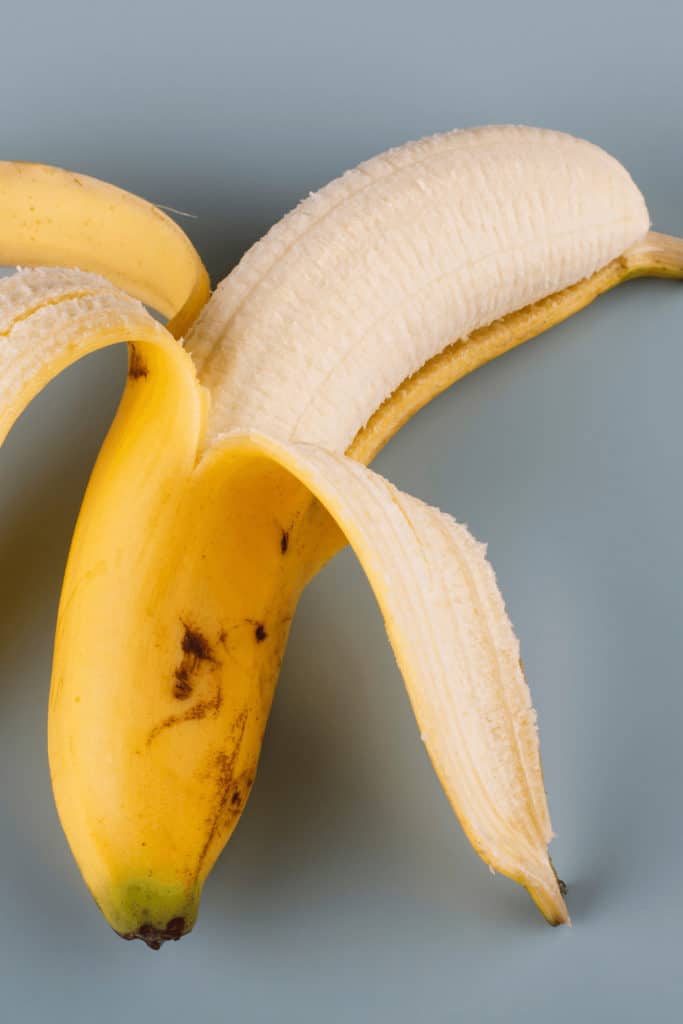
Sign 6: Easily Snap Off
If you have a bunch of bananas and they are ripe, they will easily snap off the stem when you remove one from the group.
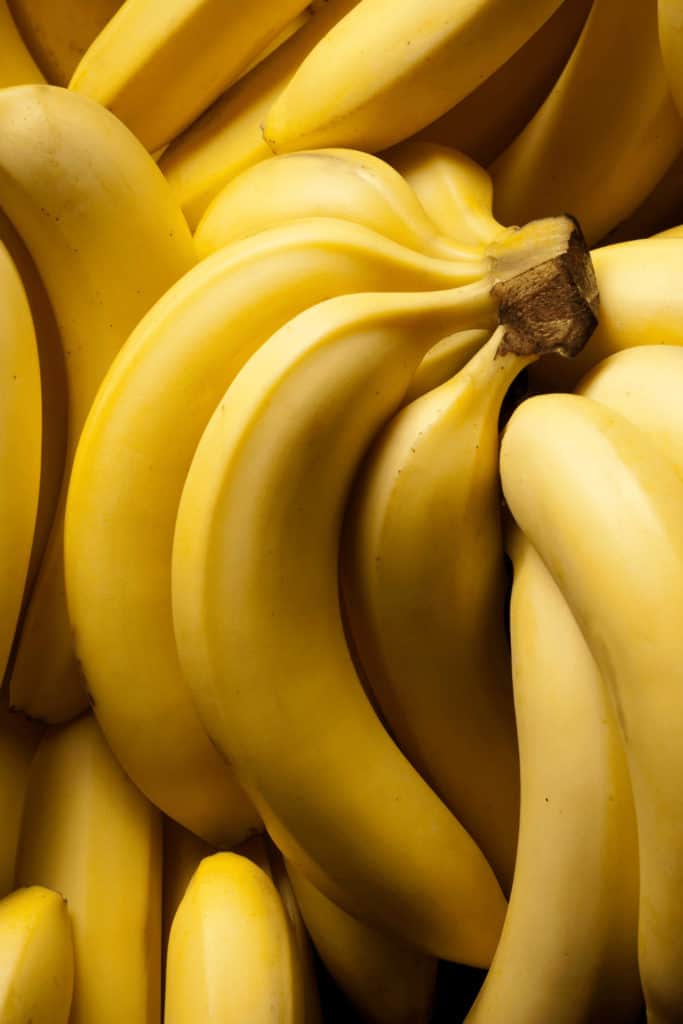
Sign 7: No Teeth Film and After-Taste
If you’ve ever eaten an under-ripe banana, then you know about the starchy film that gets stuck to your teeth.
There’s also a weird, bitter after-taste.
When you eat a ripe banana, your teeth feel cleaner and you are just left with the yummy banana flavor on your taste buds (depending on what you had with the fruit).
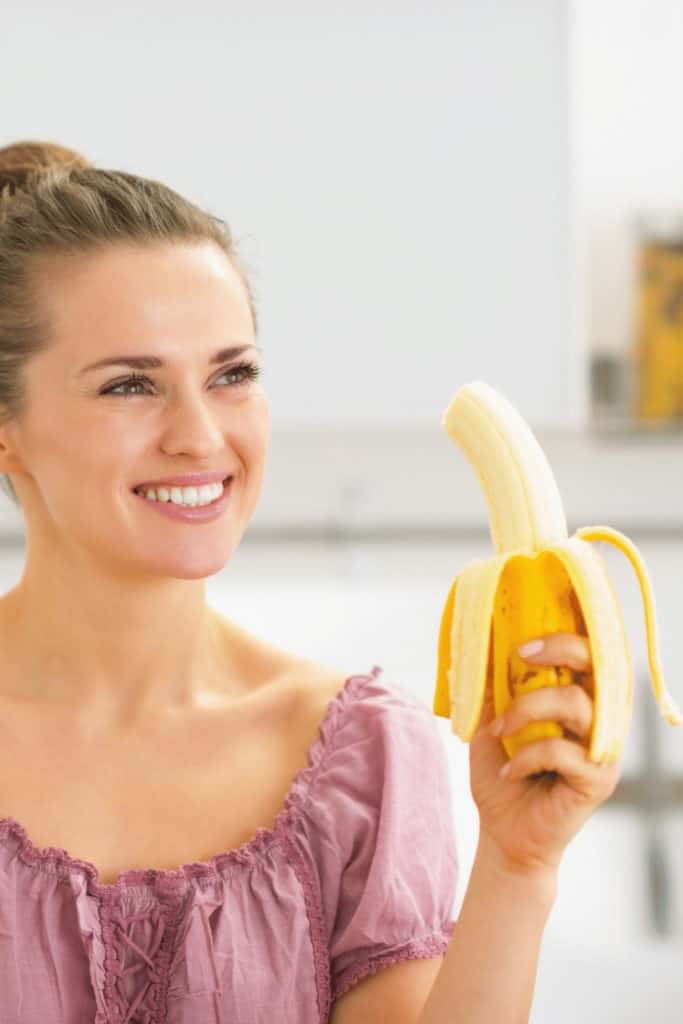
Sign 8: Plumpness
A ripe banana is full and plump, while a very under-ripe banana has edges.
An over-ripe banana may have an almost mushy-like outer appearance because it’s so soft on the inside.

Sign 9: Smell
As the unripe banana ripens, starches convert into sugar, and ethylene gas is produced to help the fruit ripen.
The unripe fruit has a light, pleasant odor, and as ripeness increases, so does the smell.
When the banana is ripe, it will smell pleasantly sweet, just like a banana.
An over-ripe banana won’t smell so sweet and eventually won’t smell nice at all as ethylene production decreases.
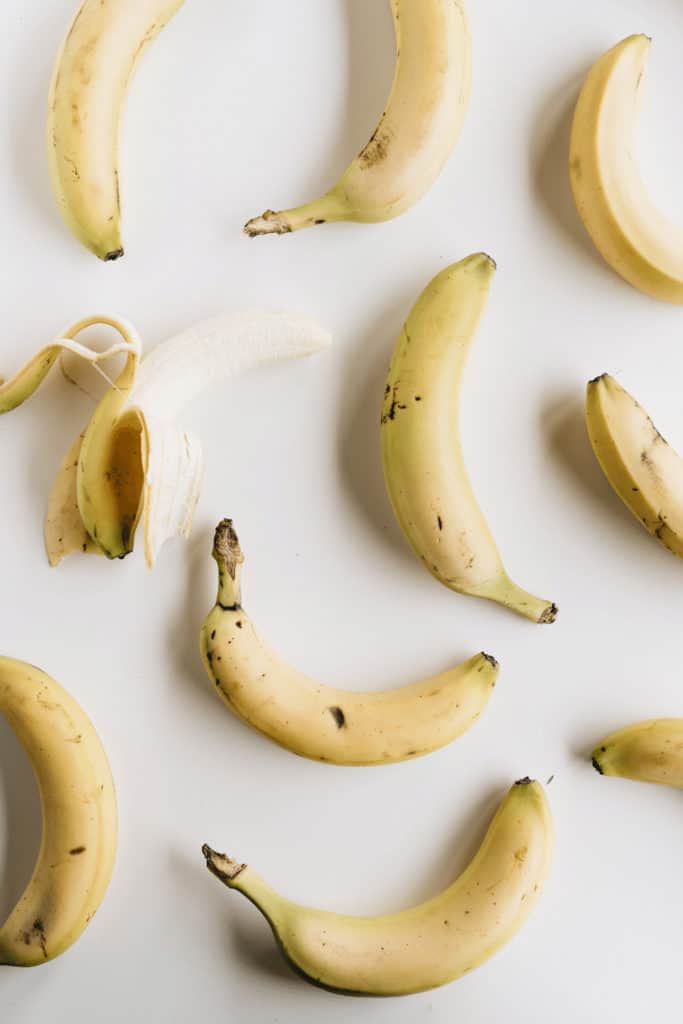
Frequently Asked Questions About How to Tell If a Banana Is Ripe
What color is a very ripe banana?
A very ripe banana is soft, yellow, and has brown spots all over its skin. This kind of banana is quite sweet, with 91% sugar and 8% starch.
Is it OK to eat a banana that is not fully ripe?
It is healthy and safe to eat a banana that isn’t completely ripe. An under-ripe banana may still be green, but they have a higher starch content and lower sugar content. This makes bananas that are not yet fully ripe great for people with type 2 diabetes.
What does a rotten banana look like?
A rotten banana is black. It’ll also be over-ripe. There may also be mold on the banana’s skin, which indicates that the inside of the banana is rotten. The smell of a rotten banana is fruity but sour. Overall, it just smells off, and you should avoid eating it.
Conclusion About How to Tell If a Banana Is Ripe
When you eat a banana depends on your personal preference.
Some people really enjoy it green or under-ripe, while others like it just past the ripeness stage.
I’ve learned that by looking for the signs I outlined above, I can tell when most banana varieties are ripe.

